The Dogwood Family East of the Cascade Mts. of Oregon and Washington
Creek Dogwood, Redosier Dogwood, Red-osier Dogwood, Red Osier Dogwood, Western Dogwood, Western Red Osier
Cornus sericea
Synonyms: Cornus xcalifornica, Cornus alba ssp. stolonifera, Cornus alba var. baileyi, Cornus alba var. californica, Cornus alba var. interior, Cornus alba var. occidentalis, Cornus alba var. sibirica, Cornus baileyi, Cornus instolonea, Cornus interior, Cornus occidentalis, Cornus sericea ssp. occidentalis Cornus sericea ssp. sericea, Cornus sericea ssp. stolonifera, Cornus sericea var. interior, Cornus stolonifera, Cornus stolonifera var. baileyi, Cornus stolonifera var. californica, Cornus stolonifera var. coloradensis, Cornus stolonifera var. interior, Cornus stolonifera var. occidentalis, Cornus stolonifera var. stolonifera, Swida instolonea, Swida sericea, Swida stolonifera
 -
- 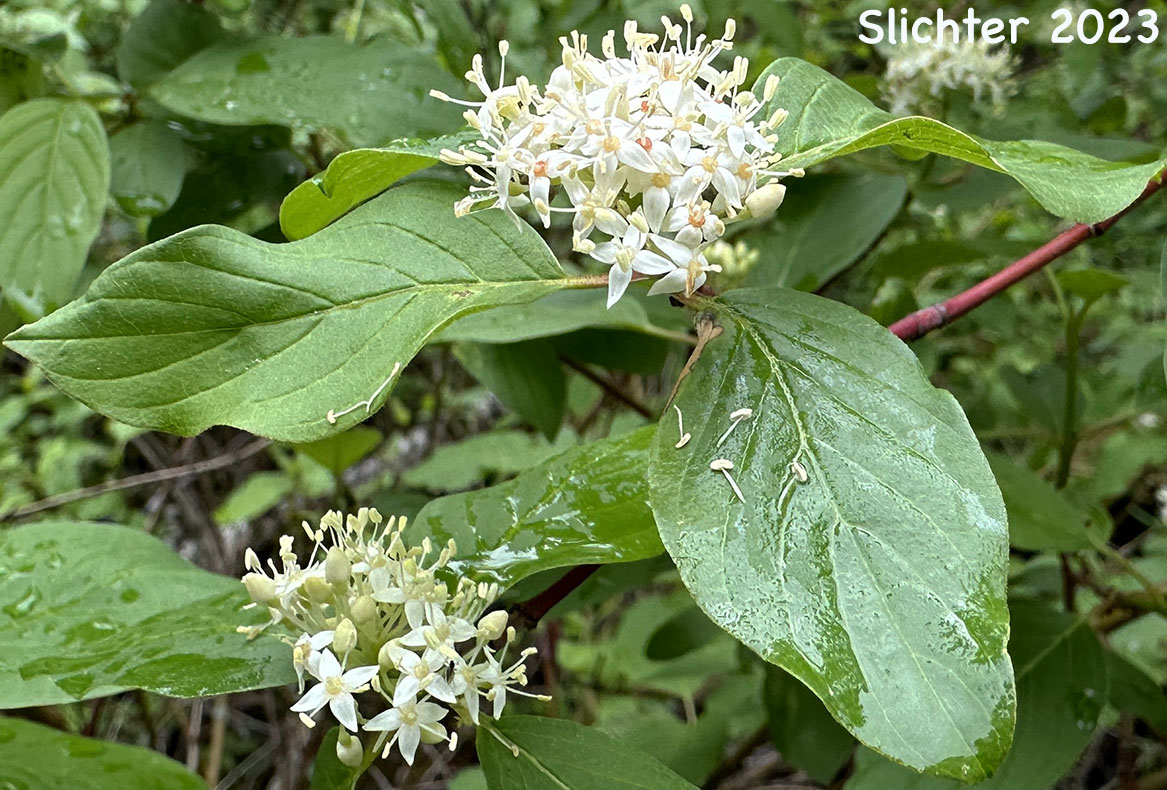
The photo at left shows the cyme of flowers and deeply veined
leaves of creek dogwood (variety occidentalis) as seen at Horsethief Butte along Washington State Highway #14 at MP 86.3.......May 1, 2005. The photo at right shows the stolonifera form of creek dogwood blooming along the Swan River Nature Trail about half a mile east of Bigfork, Montana.....May 28, 2023.
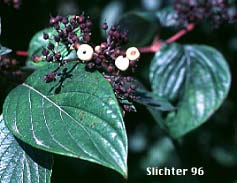 The photo
at right shows the whitish berries of Cornus sericea.
The photo
at right shows the whitish berries of Cornus sericea.
Characteristics:
Creek dogwood is an attractive, multi-stemmed shrub from 2-6
meters tall. The younger twigs are bright red to reddish-purple and gray-green
on older twigs. The twigs commonly root upon contacting moist soil. The leaves
are oval, dark shiny green above, and lighter below (See leaves below.). The
leaves are 4-12 cm long and prominently veined. The leaves appear opposite on
the twigs, and have entire margins. The blades are ovate, obovate, or ovate-elliptic
in shape.
The flowers are in flat-topped cymes, with the flower heads
lacking the large white bracts of its cousins. The white petals are small, from
2-4 mm long. Plants may flower both in spring as well as in the fall. The berries
are white and 7-9 mm long.
Habitat:
Creek dogwood is found on wet forest sites, frequently along
streams, in ditches, or in wetland swales.
Range:
Creek dogwood is found over much of North America. Variety occidentalis
is found from Alaska south to California and east to Idaho, Nevada and into
western Montana. Variety stolonifera is found from Alaska south through
British Columbia to northeastern Washington and northern Idaho and eastward
to the Rocky Mts. and hence south to Mexico. It is found eastward to Missouri,
Pennsylvania and Newfoundland.
Uses or Importances:
1. Ornamental shrub.
2. Wood is strong, used for tool handles.
3. Small straight stems, once called dags (hence the original
plant name- dagwood), which are used as skewers for campfire cooking.
4. The bark was at one time dried and used as a tea for treating
colds & flu.
5. The inner bark was once used in tobacco mixtures and for
tanning or drying animal hides.
6. The white, sour berries were occasionally eaten.
7. Wildlife browse the twigs, leaves and berries.
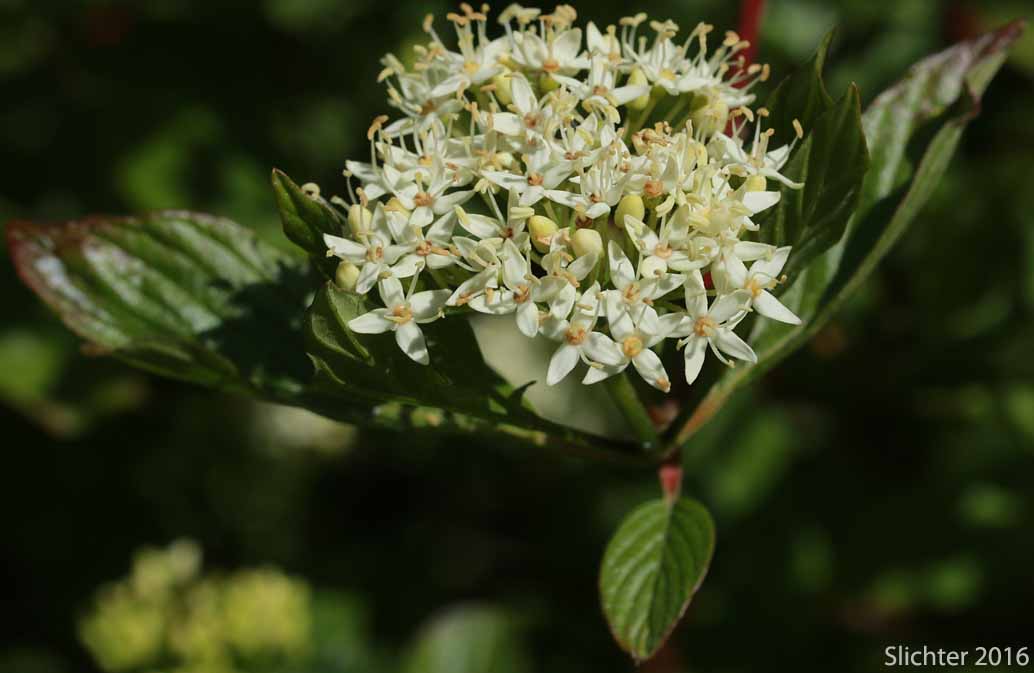 -
- 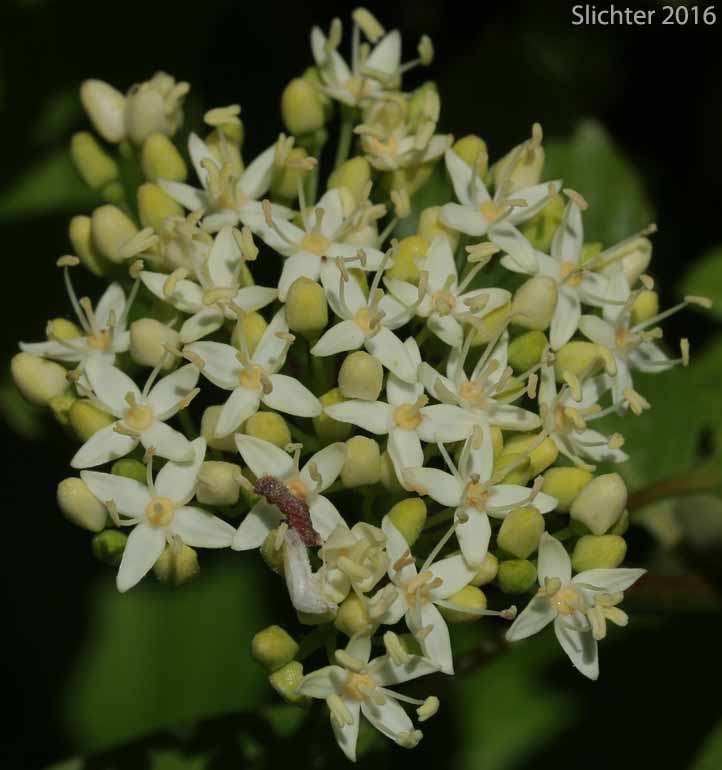 -
- 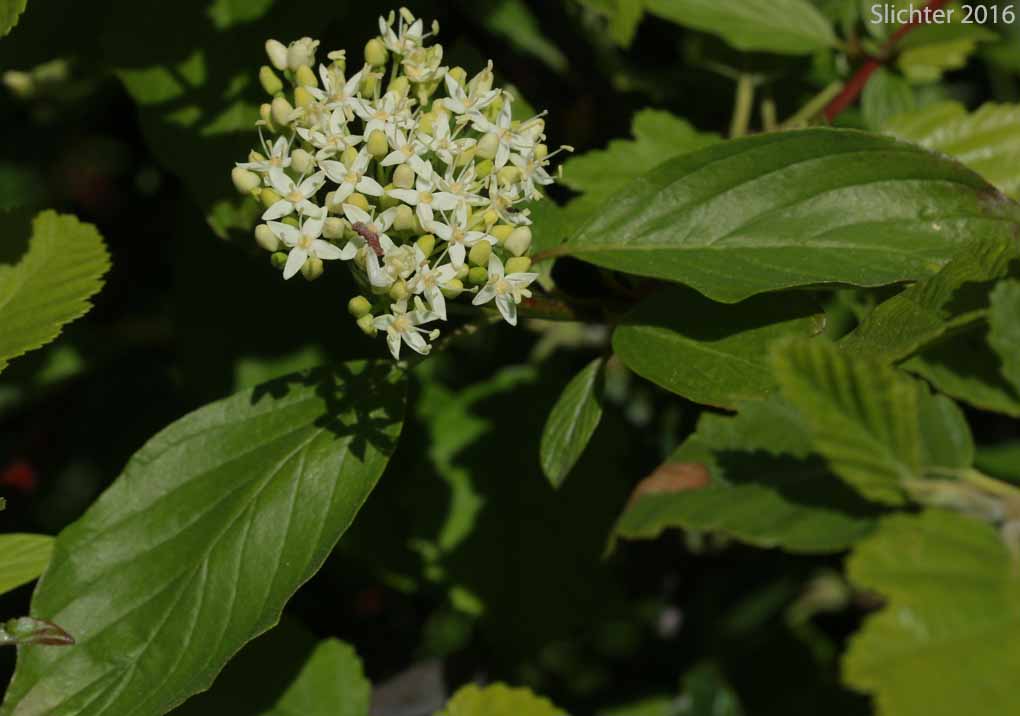
Creek dogwood as seen at Ochoco Forest Camp, Ochoco National Forest.........May 29, 2016.
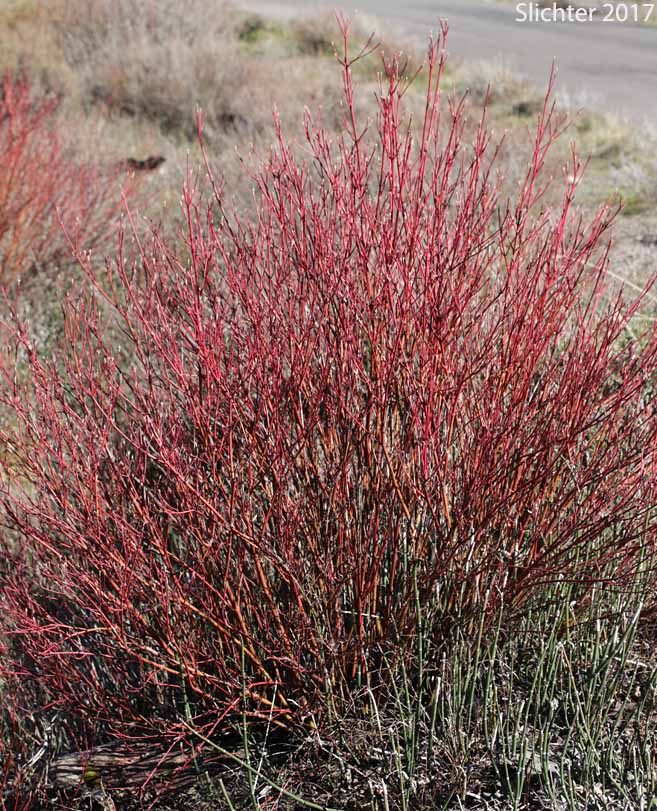
The red stems of creek (red-osier) dogwood as seen along the creek at Silver Creek Marsh Campground, Fremont-Winema National Forest........April 30, 2017.
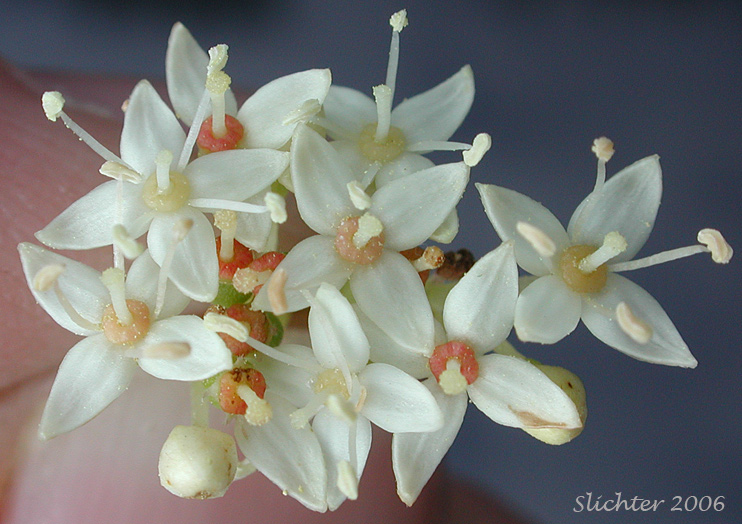 -
- 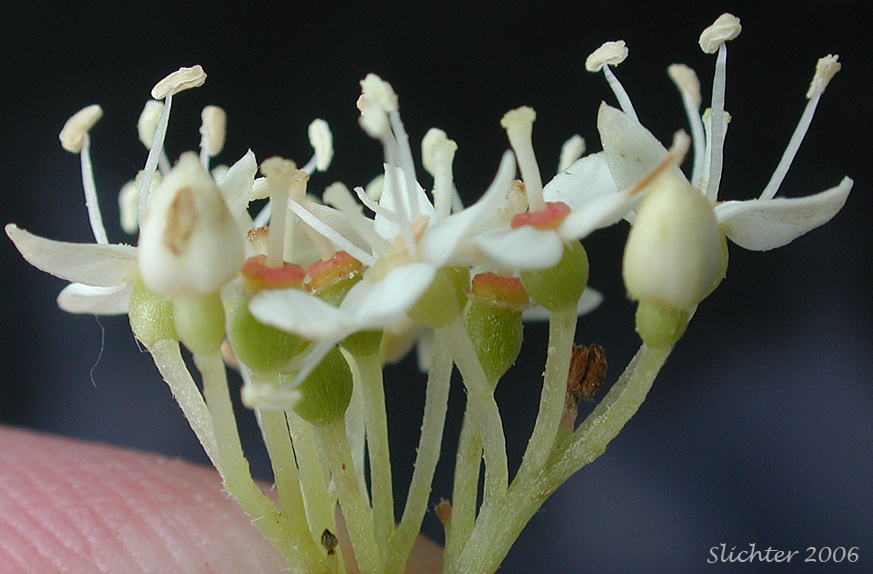
The photo above shows a close-up side-view of the inflorescence of red-osier dogwood. The hairs within the inflorescence of variety stolonifera are largely appressed, while the minute hairs of variety occidentalis tend to be more erect or curled.
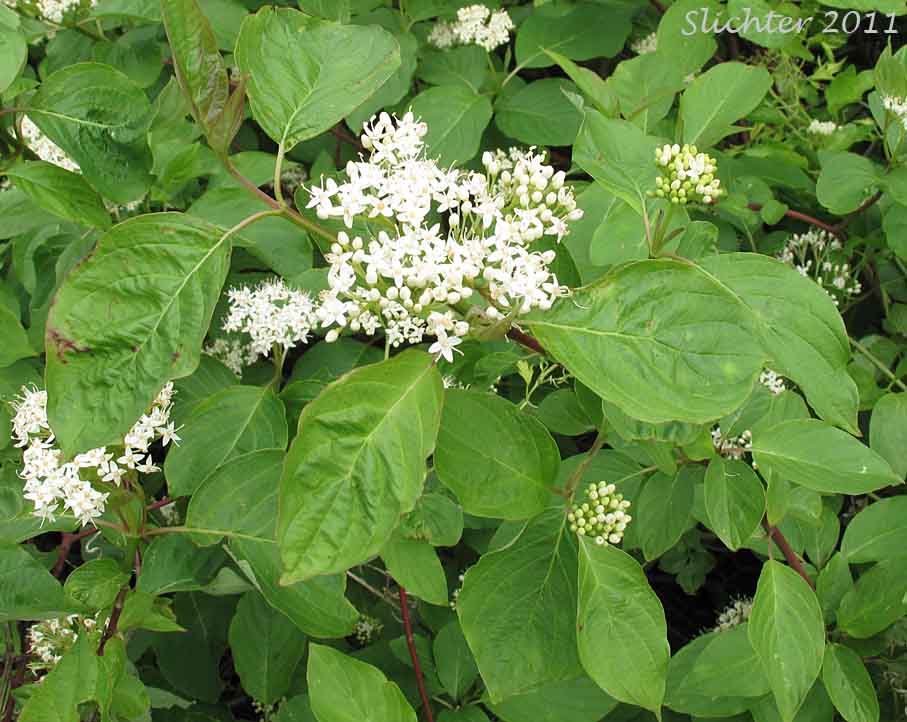
Creek dogwood growing amongst poison oak along the John Day River at the junction of US Highway 26 and OR Highway 19, Grant County, Oregon..........June 2, 2011.
Paul Slichter
 -
- 
 -
- 
 The photo
at right shows the whitish berries of Cornus sericea.
The photo
at right shows the whitish berries of Cornus sericea.